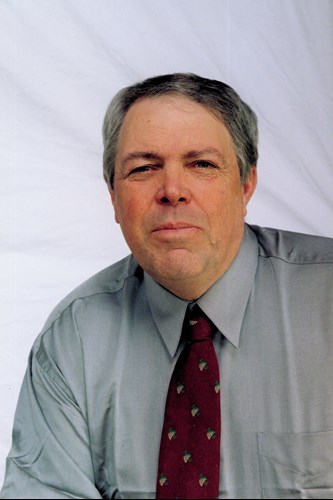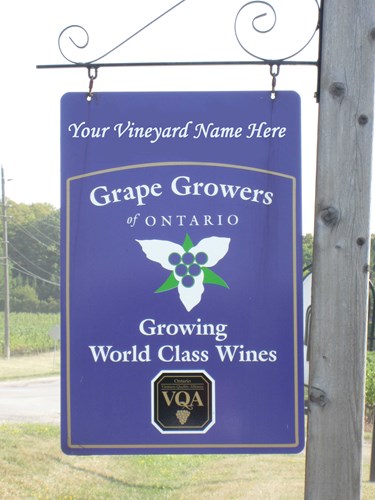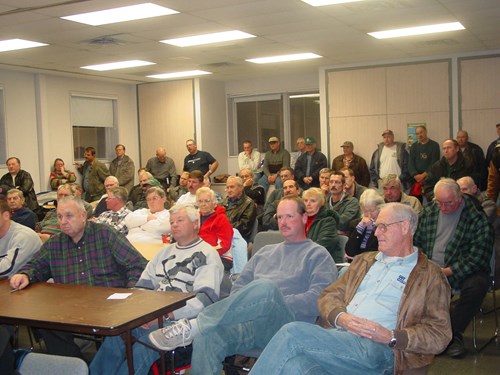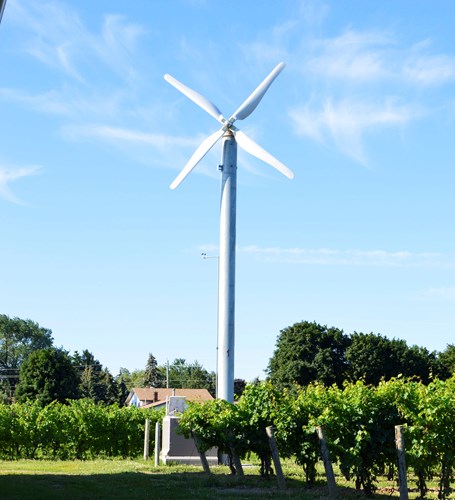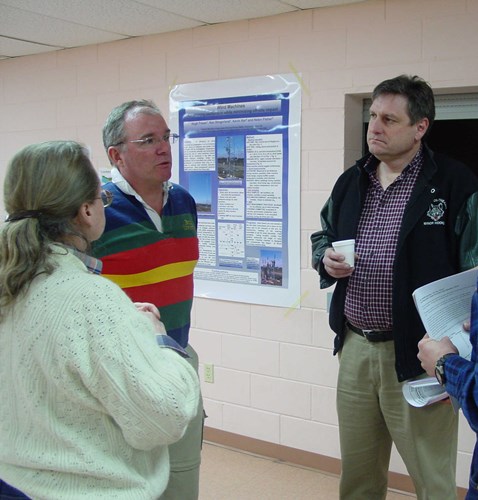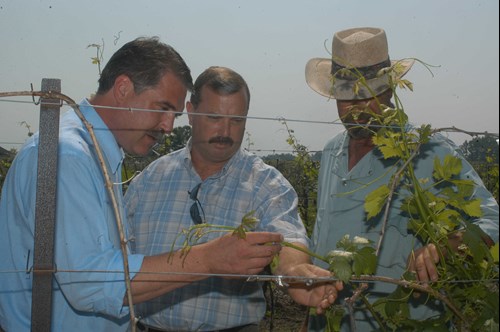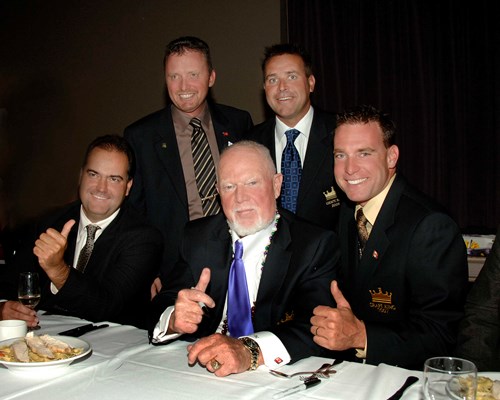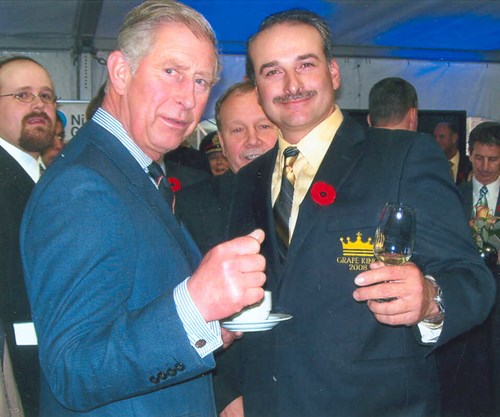The year 2007 began with change at the at the Board level, as Ray Duc stepped down as Chair of the GGO, after several years of high-level service on behalf of grape growers in all regions of the province. New Chair, Bill George, teamed up with CEO Debbie Zimmerman to ensure the continued growth and development of the sector and management of the organization.
Bill’s family has a long history in Beamsville, with the home farm granted to the family in 1796. An active member, Bill was first elected to the Growers’ Committee in 1994, and to the Board of Directors in 1995 where he served as Vice Chair from 2003 to 2007. He was also selected by his peers for viticulture excellence to represent the industry as Grape King in 2001.

Newly elected Board Chair Bill George from Beamsville, Ontario
The spring and summer of 2007 were hot and dry with drought-like conditions. The unusually warm fall extended the growing season and the harvest itself resulted in a crop of 56,315 tonnes. Of this decent harvest 46,287 tons of grapes were sold to Wineries, with a contracted 2% increase in the price per tonne as part of the 2005 three-year agreement entered with the Wine Council of Ontario. The Icewine and late harvest grapes came in at a solid 5,942 tonnes, a slight dip from 2006, but a 60% increase over 2005.
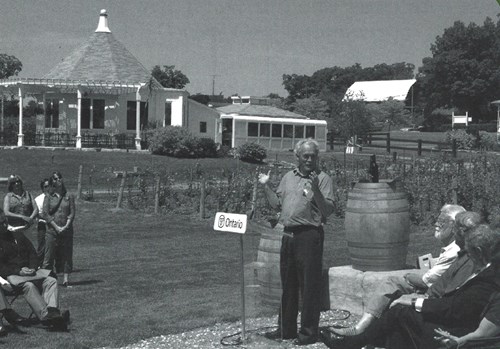
Prince Edward County receives Designated Viticulture Area (DVA).
Conversely, 2007 saw the end of an era with the closure of the Cadbury Schweppes Beverages plant in St. Catharines, after decades of partnership with the grape growers of the region. This closure adversely affected the labrusca juice grape harvest and sell through, which fell from 10,231 tonnes in 2006 to 3,755 tonnes in 2007. This closing impacted approximately 2,000 acres of Ontario’s vineyards and about 105 grape growers who actively and annually supplied juice grapes to Cadbury Schweppes, the single largest juice processor in Ontario. In responding to this closure, GGO negotiated with the Government of Ontario a $3.8 million Ontario Juice Grape Transition Program for juice grape growers, which offered temporary support for this segment of the industry to remove labrusca grapes.

The Ontario juice grape era came to an end with the closure of the Cadbury Schweppes plant in St. Catharines.
In addition, GGO worked with the Government of Canada to establish a $22.3 million Transition Program for the grape growing industry. GGO chair Bill George publicly stated: “Today’s announcement by the federal government provides assistance to our beleaguered juice grape growers and supports our wine grape growers over the next four years. We are also provided with an opportunity to work with the Government of Ontario to develop future strategic directions and market initiatives for our industry such as a varietal plan and Canadian Agriculture Income Stabilization (CAIS) program changes.” This program paid growers $1618.74 per acre towards stock removal and disposal costs for tender fruit, apples and grapes to help Producers adapt to industry pressures and changing markets.
Recognizing the industry’s need to reduce its dependence on grapevines from France and the potential to import grapevine viruses into Ontario’s vineyards, the GGO applied for and received funding from the Agricultural Adaptation Council to begin research into a domestic vine certification program to ensure that growers in Ontario are able to obtain locally certified clean plant material in the future.
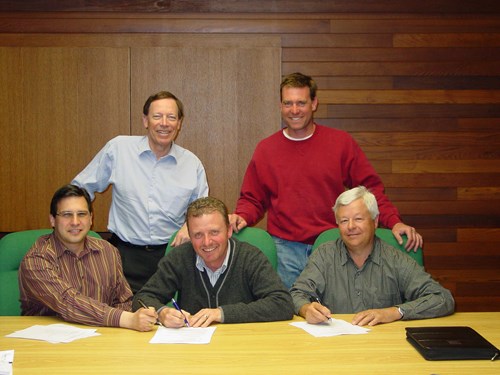
In 2007 the Ontario Grape and Wine Research Foundation was created with Matthias Oppenlaender named Chair of the Foundation. Pictured with him are Paul Speck, Bruce Walker, Kevin Watson and Jim Morrison.
Amongst all of these changes the MOU on wine content from 2005 expired with Ontario grape content in wine returning to 30% Ontario (70% imported).
The farmgate value of the crop came in at an extraordinary $74,936,000 – amongst the largest farmgate values in the GGO’s sixty years of record keeping.
2007 also marked the GGO’s 60th anniversary since its establishment in 1947. To celebrate this anniversary the GGO held a successful industry party during the 2007 Niagara Grape and Wine Festival. The GGO again partnered with Friends of the Greenbelt Foundation and Scotiabank, to present the Scotiabank luncheon with the highly acclaimed guest speaker and CBC broadcaster Rex Murphy.

MPP Jim Bradley has been a long time advocate and supporter of the Ontario grape and wine industry;

Grape growers gathered at Montebello Park in St. Catharines to celebrate the GGO’s 60th Anniversary.

CBC broadcaster Rex Murphy entertained at the Celebrity Luncheon to kick off the Niagara Grape and Wine Festival.
In summary, 2007 proved to be a productive year with many positive developments, balanced with the devastating impact of the closure of the Cadbury Schweppes juice plant. Lobbying on the growers’ behalf by the GGO and other industry supporters resulted in the speedy creation of transition programs for juice grape growers.


